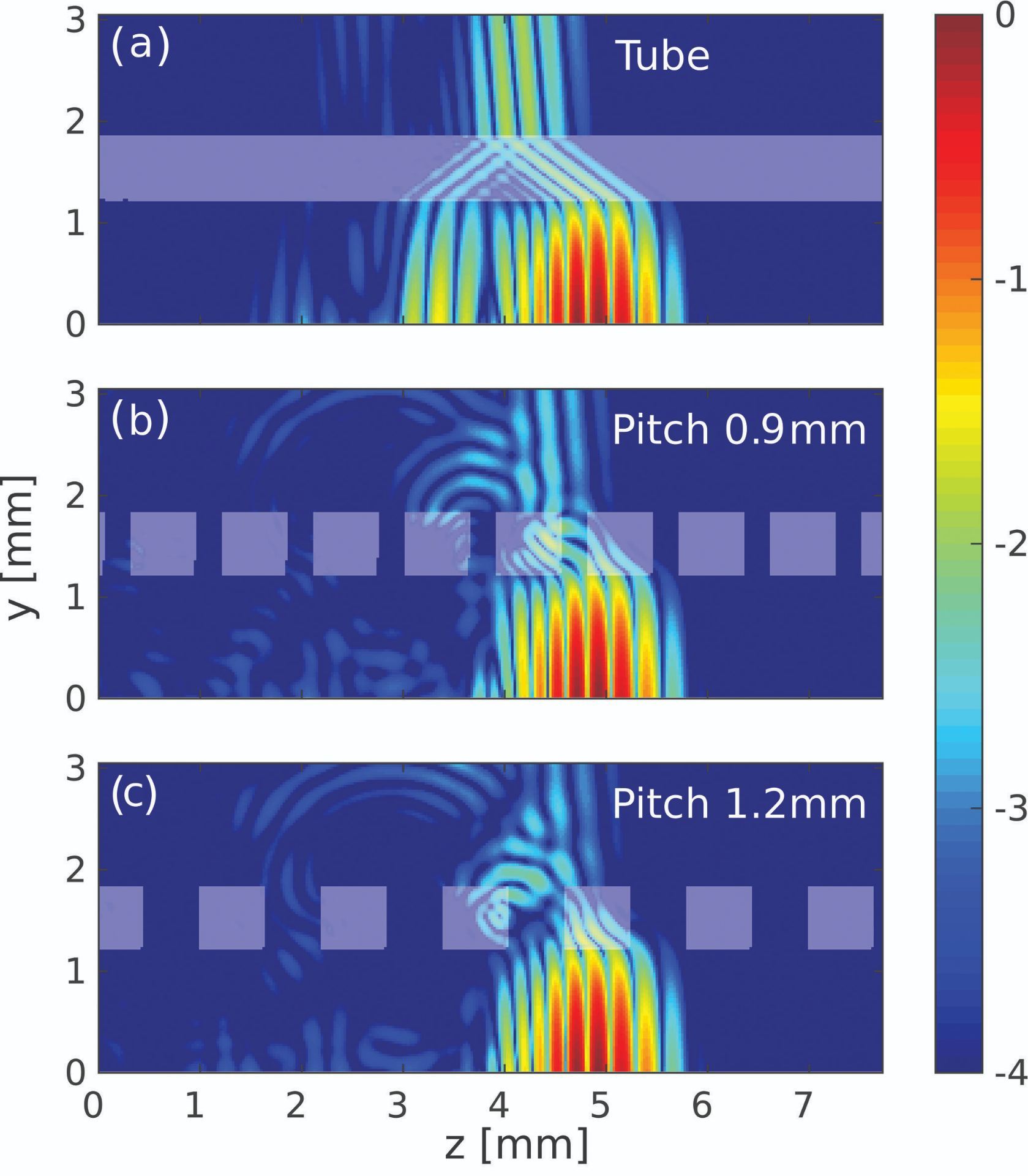
Development of novel waveguides in the terahertz (THz) region
Dominik Vogt, PhD candidate, Dr Jessienta Anthony, Research Fellow, Assoc Prof Rainer Leonhardt, Dodd-Walls Centre for Photonic and Quantum Technologies, Department of Physics.
Terahertz science
Terahertz science Terahertz (THz) radiation, often referred to the frequency range from 0.1 to 10 THz, is the focus of an active and fast growing research community. This frequency range, located in the electromagnetic spectrum between the microwave band and infrared band, was known as the “THz-gap” until the late 1980’s. A lack of available coherent sources and detectors rendered this frequency range inaccessible. The breakthrough was achieved with the generation of THz-radiation by means of femtosecond laser pulses in the visible or near-infrared range. The generation is usually achieved by either photo-conductive antennas or nonlinear crystals: while a biased photo-conductive antenna emits THz-radiation due to a time dependent photo-current induced by a femtosecond laser pulse, a nonlinear crystal hit by a femtosecond pulse generates a THz-pulse by difference frequency generation. Further development of THz-detectors and THz-sources like the introduction of a quantum cascade laser suitable for Terahertz frequencies provided the access to a vast variety of THz applications. In the past two decades a Terahertz technology in various fields like information and communications technology, biology and medical sciences, non-destructive evaluation and homeland security were established. Moreover, Terahertz radiation is suitable to study fundamental processes present in this frequency range like e.g. phonon excitation as well as inter-band transitions in condensed matter and rotational transitions of molecules in gases.
Terahertz waveguides

FDTD simulation of a THz pulse propagating in a) a dielectric tube waveguide and b)-c) a 3D-printed dielectric helical waveguide with different pitches.
3D FDTD simulations of THz waveguides on the NeSI Pan cluster
Results and future work
See more case study projects

Our Voices: using innovative techniques to collect, analyse and amplify the lived experiences of young people in Aotearoa

Painting the brain: multiplexed tissue labelling of human brain tissue to facilitate discoveries in neuroanatomy

Detecting anomalous matches in professional sports: a novel approach using advanced anomaly detection techniques

Benefits of linking routine medical records to the GUiNZ longitudinal birth cohort: Childhood injury predictors

Using a virtual machine-based machine learning algorithm to obtain comprehensive behavioural information in an in vivo Alzheimer’s disease model

Mapping livability: the “15-minute city” concept for car-dependent districts in Auckland, New Zealand

Travelling Heads – Measuring Reproducibility and Repeatability of Magnetic Resonance Imaging in Dementia

Novel Subject-Specific Method of Visualising Group Differences from Multiple DTI Metrics without Averaging

Re-assess urban spaces under COVID-19 impact: sensing Auckland social ‘hotspots’ with mobile location data

Aotearoa New Zealand’s changing coastline – Resilience to Nature’s Challenges (National Science Challenge)

Proteins under a computational microscope: designing in-silico strategies to understand and develop molecular functionalities in Life Sciences and Engineering

Coastal image classification and nalysis based on convolutional neural betworks and pattern recognition

Determinants of translation efficiency in the evolutionarily-divergent protist Trichomonas vaginalis

Measuring impact of entrepreneurship activities on students’ mindset, capabilities and entrepreneurial intentions

Using Zebra Finch data and deep learning classification to identify individual bird calls from audio recordings

Automated measurement of intracranial cerebrospinal fluid volume and outcome after endovascular thrombectomy for ischemic stroke

Using simple models to explore complex dynamics: A case study of macomona liliana (wedge-shell) and nutrient variations

Fully coupled thermo-hydro-mechanical modelling of permeability enhancement by the finite element method

Modelling dual reflux pressure swing adsorption (DR-PSA) units for gas separation in natural gas processing

Molecular phylogenetics uses genetic data to reconstruct the evolutionary history of individuals, populations or species

Wandering around the molecular landscape: embracing virtual reality as a research showcasing outreach and teaching tool
























































































































































